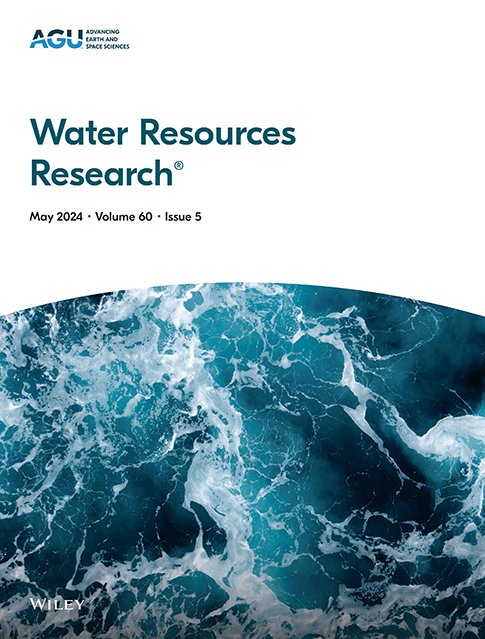大型水库对局地降水影响的评价
IF 4.6
1区 地球科学
Q2 ENVIRONMENTAL SCIENCES
引用次数: 0
摘要
水库运行对当地气候,特别是降水有着复杂而深刻的影响。量化这种影响具有挑战性,因为它需要在水库运行之前重建自然降水。本研究没有假设对比区域和研究区域的自然变率相同,而是开发了一个可解释的机器学习模型来研究降水影响因素与降水本身之间的关系,包括稳定成分(STL分解的趋势和季节性之和)和随机成分(去除趋势和季节性后的残差)。然后用它来预测在没有水库运行的情况下的自然降水。在对比地区的应用验证了预报的准确性,即使在山区也是如此。利用所提出的方法分析了长江沿岸3个大型水库对局地降水的影响,这3个水库的总库容为17.86 × 109 m3。结果表明,水库调度导致降水趋势和季节成分增加了14%,这是以往方法所低估的。此外,降水中心向水库有明显的移动。进一步比较表明,水库调度使影响局地降水格局的关键因子由高变率向低变率转变。土壤保水能力的变化可能在这些降水变化中起重要作用。我们还发现研究区土壤湿度与降水之间存在显著的正耦合关系,这是近年来研究的热点。这些发现为水库建设影响降水的机制提供了新的见解。本文章由计算机程序翻译,如有差异,请以英文原文为准。
Assessment of Large-Scale Reservoirs' Impact on the Local Precipitation
Reservoir operations have complex and profound impacts on local climate, particularly precipitation. Quantifying this impact is challenging because it requires the reconstruction of natural precipitation prior to reservoir operation. Instead of assuming that the natural variability of the contrast region and the study region is identical, this study develops an interpretable machine learning model to investigate relationships between precipitation-influencing factors and precipitation itself, including both stable components (sum of trend and seasonality from STL decomposition) and random components (residuals after removing trend and seasonality), which is then used to forecast natural precipitation in the absence of reservoir operation. The application in the contrast region verifies the forecast's accuracy, even in mountainous areas. The proposed method is used to analyze the impact of three large-scale reservoirs along the Yangtze River on local precipitation, collectively having a total storage capacity of 17.86 × 109 m3. The results indicate that reservoir operation leads to a 14% increase in the trend and seasonal components of precipitation, which would be underestimated by previous methods. In addition, there is a noticeable shift in the precipitation center toward the reservoir. Further comparisons suggest that reservoir operation shifts the key influencing factors of local precipitation patterns from those characterized by high variability to those characterized by low variability. Changes in soil water retention capacity likely play a significant role in these precipitation changes. We also found a significant positive coupling between soil moisture and precipitation in the study area, which has been a focal point of recent research. These findings provide new insights into the mechanisms through which reservoir construction impacts precipitation.
求助全文
通过发布文献求助,成功后即可免费获取论文全文。
去求助
来源期刊

Water Resources Research
环境科学-湖沼学
CiteScore
8.80
自引率
13.00%
发文量
599
审稿时长
3.5 months
期刊介绍:
Water Resources Research (WRR) is an interdisciplinary journal that focuses on hydrology and water resources. It publishes original research in the natural and social sciences of water. It emphasizes the role of water in the Earth system, including physical, chemical, biological, and ecological processes in water resources research and management, including social, policy, and public health implications. It encompasses observational, experimental, theoretical, analytical, numerical, and data-driven approaches that advance the science of water and its management. Submissions are evaluated for their novelty, accuracy, significance, and broader implications of the findings.
 求助内容:
求助内容: 应助结果提醒方式:
应助结果提醒方式:


